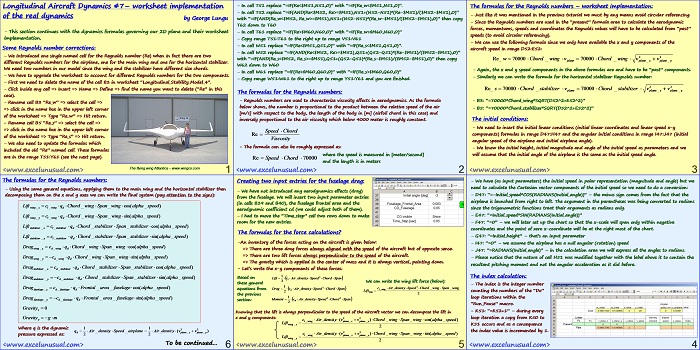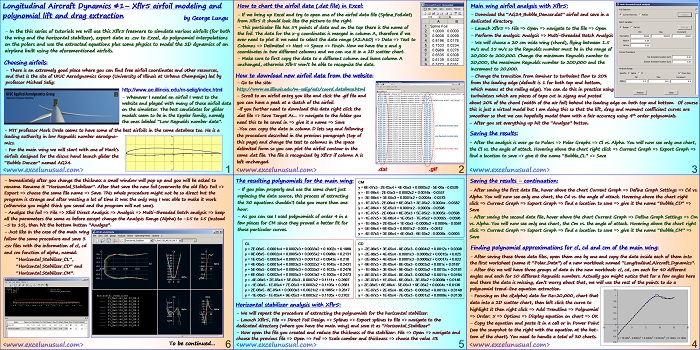This section continues the worksheet implementation of the dynamics formulas for aerodynamic forces and momenta. [sociallocker][/sociallocker] Longitudinal Aircraft Dynamics #8- worksheet implementation of the real dynamics by George Lungu – This section continues with the dynamics formulas governing our 2D plane. Worksheet implementation of the force calculation formulas: – We will calculate these forces in a new area of the worksheet.… Read More... "Longitudinal Aircraft Dynamics #8 – worksheet implementation of the dynamics equations (c)"







